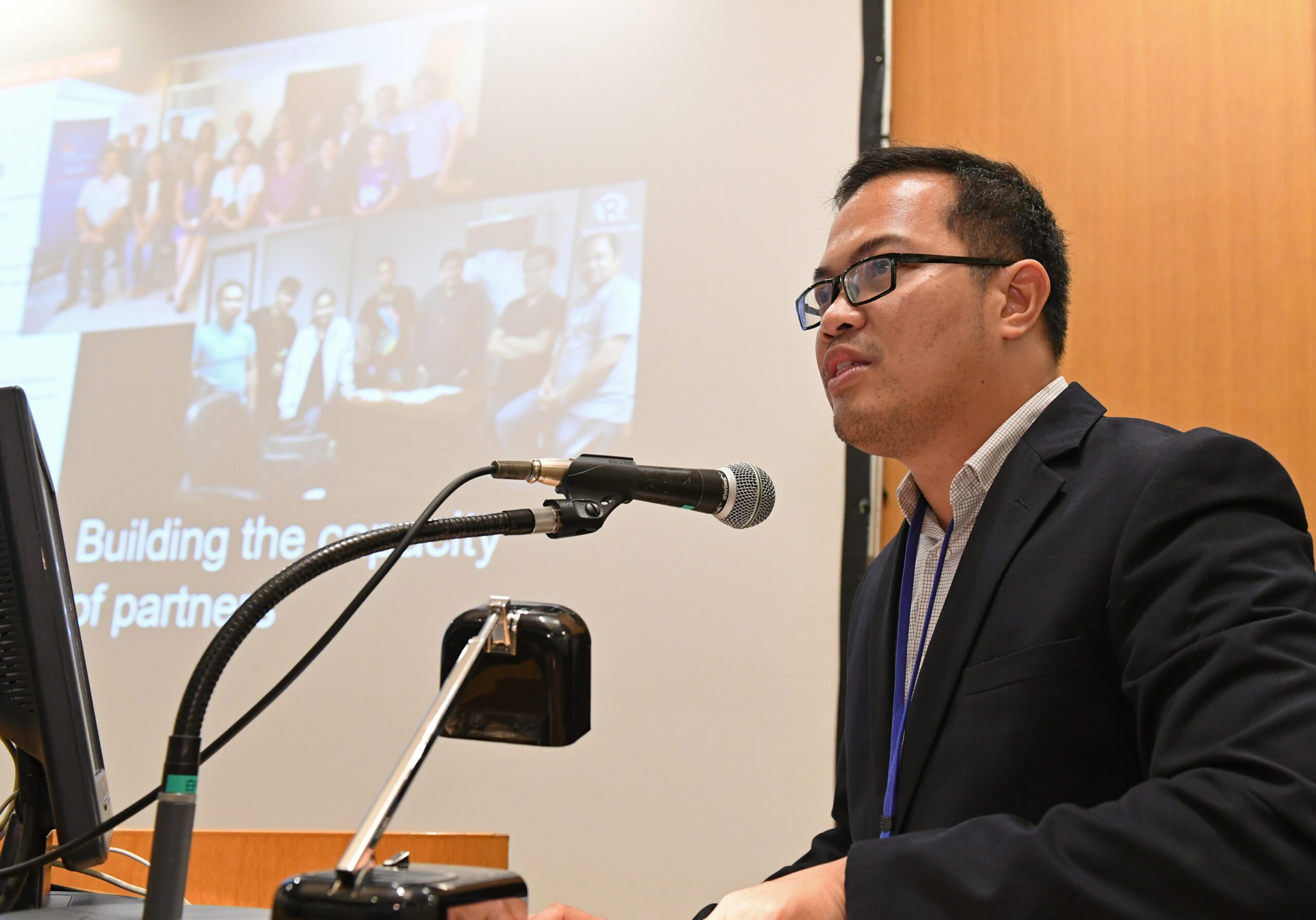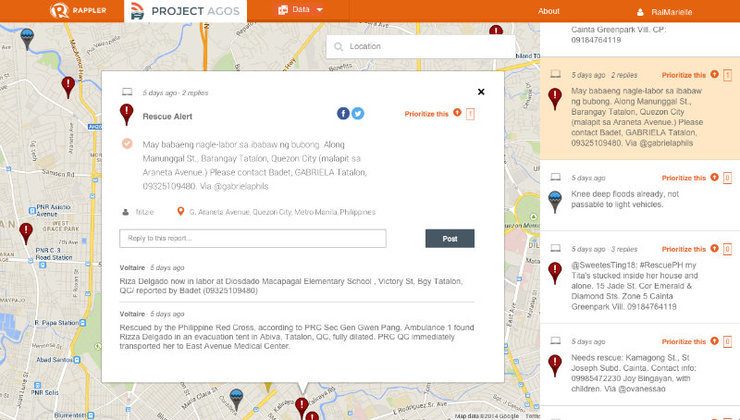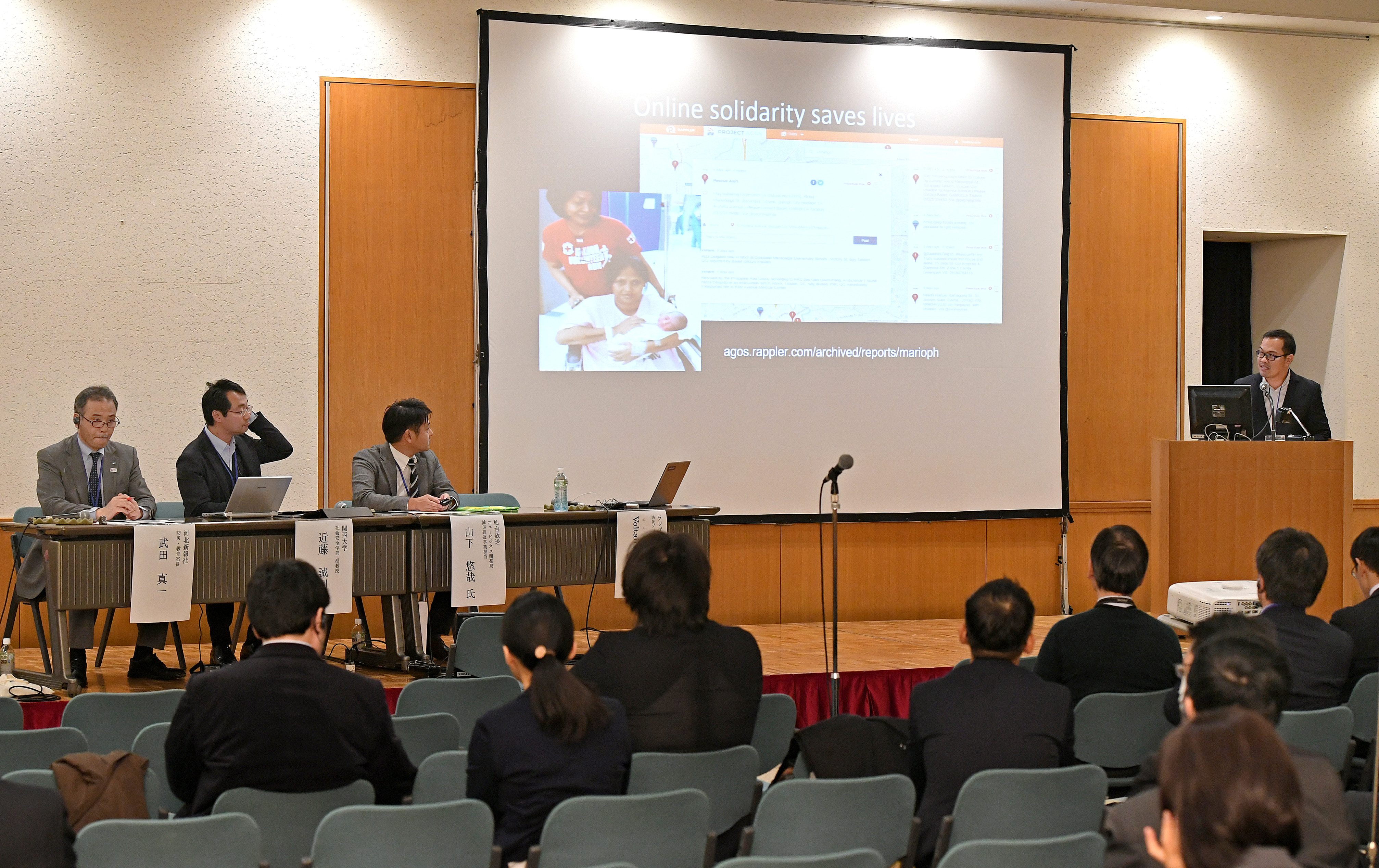SUMMARY
This is AI generated summarization, which may have errors. For context, always refer to the full article.

MANILA, Philippines – With the death toll from Vinta (Tembin) rising by the dozens within hours, it is becoming apparent that local authorities and rescuers were taken by surprise by the force of the tropical storm. Flash floods and landslides have submerged communities, even wiped out a village, uprooted crops, closed roads, and damaged bridges.
What makes all these tragic is not just that it’s happening a few days before Christmas, but the realization that there was a time the Philippines already made it through natural disasters with zero, or near-zero, casualty. It shows us now the urgency of ensuring that communities and their leaders, every stakeholder, take disaster preparedness seriously.
In late November, MovePH’s Voltaire Tupaz, a pioneer of Rappler’s disaster response service called Agos, spoke at the 2017 World Bosai Forum/International Disaster and Risk Conference in Sendai, Japan upon the invitation of JICA. He spoke about how news media, social media users, and technology have combined heart and power to respond to emergencies and save lives.
This is an excerpt from his speech. – Editor
***
Let me begin by sharing the story of Yesha. She was born on a harsh day, hours after a storm hit the Philippines on September 19, 2014. She was still in her mother’s womb when floodwaters rushed into her family’s cramped shanty in one of the urban poor communities in the country’s capital.
Her young brothers – all 5 of them – and her paralyzed aunt shuddered in fear as the wind howled. Her mother, Riza, evacuated them to the roof, one by one, while in labor.
“Kahit na sakit na sakit na tiyan ko, inakyat ko pa rin mga anak ko at ate ko,” her mother recalled. (I was already in great pain, but I had to evacuate my sons and my elder sister.)
Yesha was lucky to have a brave mother in Riza, who went through a lot in life – lost two babies and single-handedly raised her siblings.
With the meager income she earns from scavenging, Riza couldn’t give her children diapers, a crib, let alone a permanent home. At that time, she feared Yesha would be born homeless if she did not find money to pay the rent for the month.
But she was sure of one thing: she would do everything to protect Yesha.
The story of Yesha and her mother reflects the situation in the Philippines – a poor and disaster-prone country that is battered by about 20 tropical cyclones every year.
The Filipino spirit may be resilient, but the country’s infrastructure is not.
A story about social solidarity
That is why disaster preparedness and mitigation are important in vulnerable countries like ours. In the Philippines, what we lack in disaster investment, we make up for with social innovation.
How Riza and her family were rescued is an inspiring tale of such initiative – transforming social media activity into civic action.
They were saved because of selfless volunteers, strangers, and brave responders, who collaborated through the use of digital technology. (READ: Project Agos: Pregnant woman, HIV patient rescued)
As her mother put it, her cry for help was “texted to social media.” Yesha’s mother did not have a mobile phone, but she had neighbors and friends who had mobile phones and who were on social media.
The report was pinned on the map of Agos, powered by eBayanihan, an online platform that enables citizens, civil society, and government to collaborate before, during, and after disasters.
This is how we do it: the Agos team monitors Twitter and Facebook reports. Through the Alert map, our digital humanitarians sift through and validate critical information, like rescue and relief needs. The platform automatically captures text messages sent to 2929 and Twitter posts that use standard disaster hashtags in the country, like #FloodPH, #RescuePH and #ReliefPH. It is a product of the capacity of Filipino netizens to self-organize and mobilize during disasters. Disaster managers and responders are alerted to act on these reports.
In the case of Riza, we contacted the concerned citizen to verify the report plotted on the Agos Alert Map and informed the Philippine Red Cross about the call for help. In no time, we received a text message from the humanitarian group: “A bouncing baby girl for Riza Delgado. Normal delivery at EAMC (East Avenue Medical Center).”
If harnessed, social media and text messaging can bridge the digital divide that extends even to disaster risk reduction work in developing countries.
Such gap and opportunity were clear in my mind when I was conceptualizing Agos with colleagues from MovePH, Rappler’s civic engagement arm, and our technology and research teams.

Agos, powered by the Filipino ‘bayanihan’ spirit
Agos has evolved through time, having learned from the various disaster operations, which we covered and participated in.
It was launched as a project in 2013 at the Manila Social Good Summit. In 2015, it merged with the eBayanihan system of the Ateneo de Manila, a leading university in the Philippines.
The partnership combined the rigor of scholarship and research in eBayanihan with Rappler’s expertise in user experience, crowdsourcing, content creation, and community engagement.
Now powered by eBayanihan, Agos “promotes innovative and responsible use of mobile and web technologies to facilitate the flow of critical and actionable information to those who need it before, during, and after disasters.”
Through the system, we aim to link up vulnerable communities and individuals with those who have the capacity and resources to help.
We consider Agos as “a collaborative platform that combines top-down government action with bottom up civic engagement, Agos helps communities mitigate risks and deal with climate change and natural hazards.”
That’s what the Filipino word “bayanihan” actually means – the spirit of collaboration and cooperation.
Lessons from disasters
As aptly themed, the World Bosai Forum here in Sendai, Japan, is “a venue to spin knowledge from disaster and weave the wisdom of disaster risk reduction into society.”
Let me then share some of our stories from the Philippines that were inspired by digitally-fuelled action.
- Raising awareness on disasters and climate change
As journalists in the digital age, we at Rappler regard information not only as facts but also as a form of aid that we need to share in times of disasters.
The Agos system has become Rappler’s life-saving intervention on top of our primary duty as storytellers.
First, how we share and amplify information is as important as its accuracy.
If you visit the Agos microsite, you will find engaging multimedia content on disaster preparedness, response, and recovery, and on climate change mitigation and adaptation.
We present not only the various hazards but also how risks associated with them could be mitigated to prevent loss of lives and properties.
Rappler, MovePH, and its partners have also launched award-winning environmental campaigns, like #NowPH, which mobilized the Filipino youth to push for the landmark Paris Agreement, and #ClimateActionPH, which sought to sustain the social movement online and on the ground.
-
Engaging community action during Super Typhoon Yolanda (Haiyan)
The super typhoon, which devastated the province and city where I was born, was a major test for the Agos platform. Through those tragic times, the Agos team gathered reports on devastation, missing people, and relief needs. It also took the initiative in mapping cell signals in affected areas.
But the most heartwarming impact of technology which I witnessed on the ground during that harrowing ordeal was how it helped in reconnecting survivors with their relatives outside the disaster zone.
The experience made the team realize that technology only matters if it touches the hearts of people.
Today, the platform can also be activated during other humanitarian crisis situations. We recently used Agos in efforts to respond to the needs of displaced families during the armed conflict in Marawi City in Mindanao.
-
Enhancing government capacity to respond near-real time
I was at ground zero when another super typhoon, Hagupit (Ruby), hit the country and my region a year after Yolanda (Haiyan). Even if I was in the field covering the storm, I could feel the action of the Agos team through my mobile phone.
Before I left Manila, we had formed a group of digital humanitarians who were ready to assist responders, the affected communities, and the disaster management agency. They were excited to be a part of a national effort to dramatically reduce the number of casualties.
After the deadly storm, some affected areas in the country achieved the elusive goal of zero casualty.
The government’s disaster response cluster recognized social media as an integral part of the whole-of-society approach to managing disasters, institutionalizing the use of crowdsourcing in DRR work.
Agos now serves as the channel through which direct feedback from citizens are processed and relayed to the National Disaster Risk Reduction and Management Council (NDRRMC) in order to determine critical needs on the ground, supplementing reports submitted via official channels.
The challenge now is to scale up by expanding the number of local government units and communities which we have trained to use the platform.

Bringing technology to communities
Let me end with a story that emphasizes such need to bring information and technology to the frontlines of disaster response – the villages.
I covered this inspiring story of Barangay Guindapunan in Daram, a village in an island across Leyte, after Super Typhoon Ruby made landfall in Eastern Samar on December 6, 2014. It was the strongest typhoon that ever hit Daram in recent memory.
At dawn on December 7, all the residents could see were huge waves crashing over the roof of the waiting shed, washing away their shanties and boats.
About 81 houses were flattened in Guindapunan, mostly those along the shore. No one died.
While interviewing Ramil Ramirez, the village chief, tears swelled up in his eyes as he struggled to show me the text message flashed on the broken screen of his old Nokia phone:
“May-ada tiabot nga bagyo. Maabot ha niyo lugar (A typhoon is coming. It will hit your area),” a message read.
“Mahataas an dagat, maabot hin mga 5 meters an kahitaas (There will be big waves that will reach as high as 5 meters),” another message said.
For Ramil, these text messages saved the island from the wrath of the typhoon.
The island weathered the storm because of timely and specific information that enabled local officials to prepare and convince residents to evacuate. (READ: How a small Samar town survived deadly storm surges)
Surge of generosity
Five years ago, I introduced Agos as a project, a mere sketch.
I recall saying, “Every text or tweet or post on Facebook could be a stream of information that could prepare us to face the weather challenge.”
Now, the platform is not only facilitating the flow of information but also the surge of generosity that saves lives.
The world, including the web, can be dangerous and cruel, but may the power of stories, social media, technology, and the crowd to save lives be a constant reminder of our capacity to collaborate and show kindness – both offline and online – in times of disaster, in times of need.
This is a lesson that we should not forget.
–
– Rappler.com
Voltaire Tupaz is the editor of MovePH, Rappler’s civic engagement arm. One of the pioneers of MovePH and an initiator of Agos, he leads the operation of the system during disasters in the Philippines. He covers development stories, disasters, and humanitarian work.
Add a comment
How does this make you feel?
There are no comments yet. Add your comment to start the conversation.